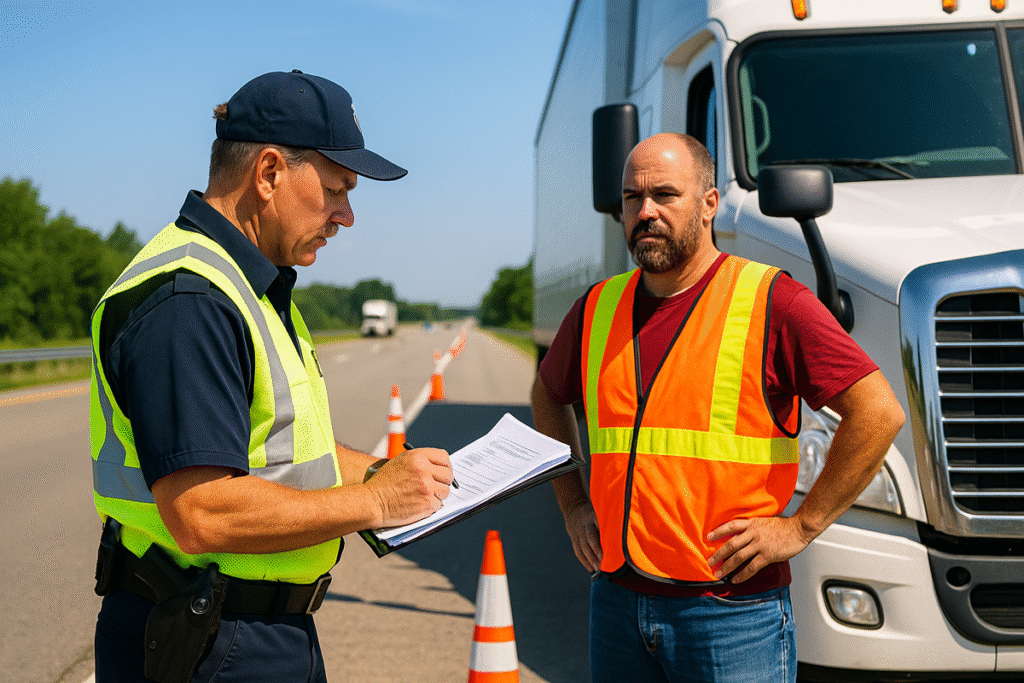
Unexpected DOT Audits During Q3 Deliveries: Are You Ready?

As Q3 accelerates, transportation and logistics operations face heightened pressure to meet delivery deadlines. This seasonal surge often overlaps with an uptick in unexpected Department of Transportation (DOT) audits. In 2023 alone, the Federal Motor Carrier Safety Administration (FMCSA) conducted over 12,500 compliance reviews, with notable increases during high-demand quarters such as Q3 (Compliance, Safety, Accountability (CSA), 2024). These audits are triggered by patterns such as inconsistent hours‑of‑service reporting, poor maintenance documentation, or gaps in driver qualification files, which become more pronounced when operations are stretched thin.
Construction companies may find heavy equipment transport under scrutiny if vehicle inspection logs are incomplete or out of date. Transportation providers can face focused reviews when electronic logging device (ELD) data reveals non-compliant driving hours or unassigned miles. In general industry, inadequate management of drug and alcohol testing programs or missing pre‑employment screening documentation often leads to deeper audits. For environmental services, improper handling of hazardous materials manifests in insufficient shipping papers or container labels, increasing the risk of DOT and Environmental Protection Agency (EPA) penalties (Hazardous waste transportation, 2017).
Being prepared for DOT scrutiny during Q3 requires a deliberate and consistent focus on safety and compliance. It begins with providing timely and situation‑specific safety and health training that reinforces audit triggers and recordkeeping best practices (Training, 2024). Effective hazard prevention and control should include proactive inspections of vehicles and reviews of safety‑critical documents, ideally scheduled midway through the quarter to catch oversights. Worksite analysis is essential auditors often target irregularities in driver hours and delivery routes that can suggest falsified logs or non‑compliance under the FMCSA’s Compliance, Safety, Accountability (CSA) program (FMCSA, 2024). The linchpin of audit readiness, however, lies in leadership: when management is visibly committed and engages employees in compliance efforts, organizations are better equipped to respond to audit demands quickly and effectively (Safety, 2025).
Key Safety LLC stands ready to support businesses during these pressure‑filled periods. Through our Service on Demand offering, we help clients manage real‑time audit requests and documentation demands. Our Document Development team customizes audit‑ready forms, maintenance logs, and safety review protocols. With our Regular Consultation Service, companies can enter Q3 with a compliance strategy that anticipates potential DOT triggers before auditors arrive.
Avoid costly delays and reputational damage by ensuring your compliance program is ready before the audit arrives. Subscribe to the Key Safety newsletter for proactive insights and customized support that keep your deliveries on track.
References
Environmental Protection Agency. (2017, January 19). Hazardous waste transportation. https://www.epa.gov/hw/hazardous-waste-transportation
Federal Motor Carrier Safety Administration. (2024). Compliance, Safety, Accountability (CSA).https://csa.fmcsa.dot.gov/
Occupational Safety and Health Administration. (2024). Training requirements in OSHA standards.https://www.osha.gov/training
U.S. Department of Transportation. (2025, July). Safety. https://www.transportation.gov/policy/transportation-policy/safety
Comments:

